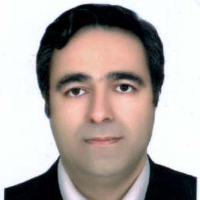Experimental study of the effect of the location of the horizontal screen from the edge of the vertical drop on the pool depth and the amount of downstream energy loss
In the early 21st century, vertical screens downstream of small hydraulic structures were proposed as energy dissipators by Rajaratnam and Hurtig (2000). Extensive studies were then performed on thickness, porosity, pore shape, flow angle, and multiple flow currents. The results of these studies showed that the screen with 40% porosity and square hole shape creates the highest energy dissipators.Since the distance of the horizontal screen from the edge of the vertical drop can also affect the hydraulic parameters and flow energy dissipation, so in the present study, for the first time, the effect of the location of the horizontal screen from the vertical drop edge on hydraulic parameters and vertical drop dissipation has been investigated and evaluated.
A laboratory flume 5 m long, 0.3 m wide, and 0.45 m high with zero floor slope and two pumps were used to perform the experiments of the present study.The vertical inclinator at the beginning of the flume was made of glass with a height of 20 cm. Screens made of polyethylene with the shape of circular holes with a diameter of one centimeter, with the zigzag arrangement and two porosities of 40 and 50 percent were prepared and placed at distances of 5, 10, and 15 cm from the edge of the drop, respectively. The flow upstream of the drop was considered subcritical. In all laboratory models, the flow discharge was between 200 and 800 liters per minute and the downstream valve was considered fully open.
Laboratory observationsIn all experiments and at a constant discharge, it was observed that with increasing distance of the screen from the edge of the drop, climate interference is reduced. Also, for the case where the distance of the screen from the edge of the Inclined was more than half of the height of the drop (S = 15 cm), the screen acted as a flow attenuator and the whole length of the screen was submerged by the current. The flow is transmitted downstream along the length of the screen with short waves.Wet lengthScreens with 50% porosity have the lowest relative wetting length compared to 40% porosity. Horizontal screens with 40% porosity increase the relative length of wetted plates by 30% compared to 50% porosity. On the other hand, it was observed that in both porosities of the screen, with increasing the relative critical depth to the location of the screen, the relative wetting length of the plates increased.Pool depthIt was observed that the depth of the pool increases with the increasing relative distance of the screen from the edge of the drop. In addition, by increasing the angle of impact of the jet planes with the bed, the return flow to the inclined wall increases and increases the depth of the pool. Also, by comparing the depth values of the pool in two porosities and at a constant relative distance, it is inferred that the porosity of the screen does not have a significant effect on the depth of the pool.The length of the turbulence Because the length of turbulence is a function of the relative wetting length of the screen, so decreasing and increasing the wetting length of the screen is effective on the amount of turbulence length created. Since the screen with 50% porosity and relative distance of 0.25 have the lowest wetting length of the plate and also the screen with 40% porosity and relative spacing of 0.5 has the highest relative wetting length, therefore the lowest and highest length values Turbulence is specific to these two models. In general, for the screen with 50% porosity, increasing the screen distance from 0.25 to 0.5 increases the turbulence length by 14%. For a 40% mesh screen, increasing the relative screen distance increases by 10%.Total energy dissipationBased on the studies of previous researchers and the results of the present study, it can be found that none of the parameters of orifice diameter, slope placement, screen, dual horizontal screen, and distance of plate from the vertical edge of the drop does not affect depreciation. It does not exist and only increases or decreases climate interference.
The results showed that with increasing the relative distance of the inclined, the discharge, and decreasing the porosity of the screen, the wetting length and the turbulence length of the screen increase. In addition, in examining the depth of the pool, the results showed that increasing the relative distance of the plate from the edge of the drop led to an increase in the depth of the pool in both pores of the screen. Finally, although increasing the relative distance of the plate from the edge of the drop reduced the climatic interference, they still did not affect the energy dissipation of the flow.
- حق عضویت دریافتی صرف حمایت از نشریات عضو و نگهداری، تکمیل و توسعه مگیران میشود.
- پرداخت حق اشتراک و دانلود مقالات اجازه بازنشر آن در سایر رسانههای چاپی و دیجیتال را به کاربر نمیدهد.


